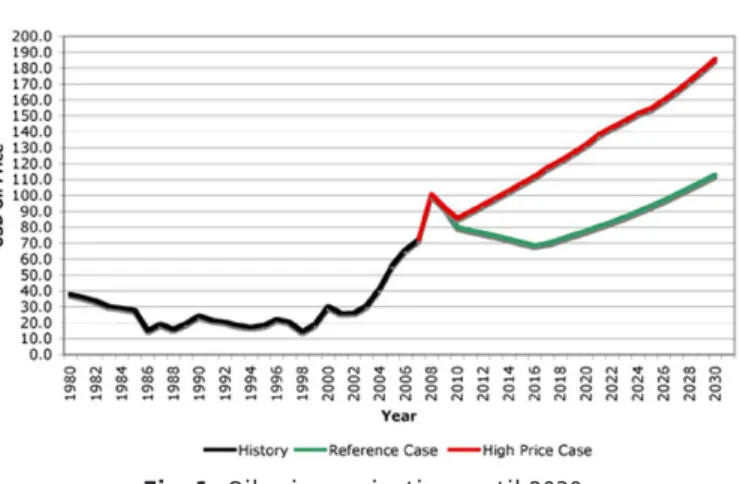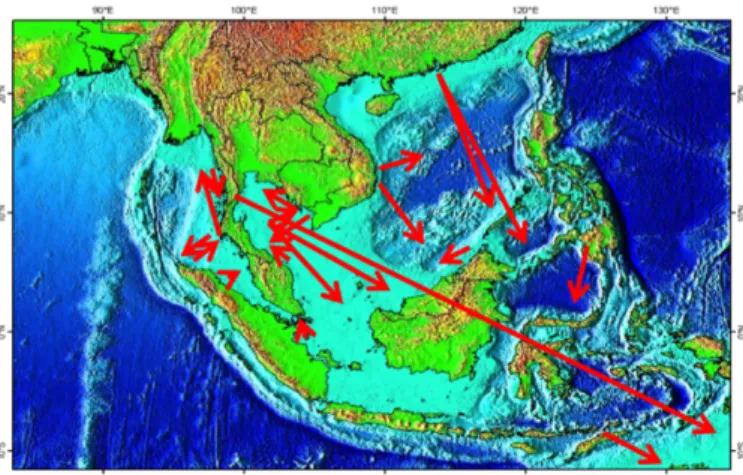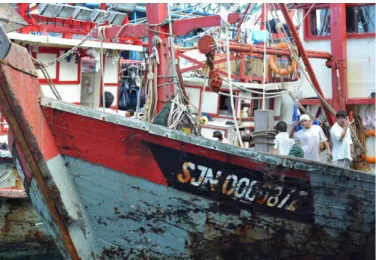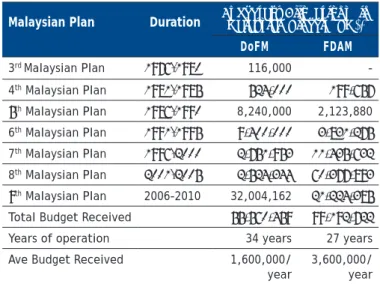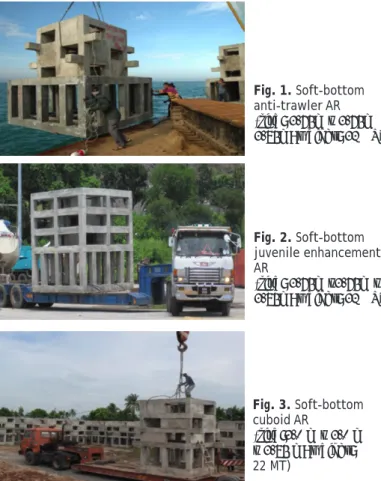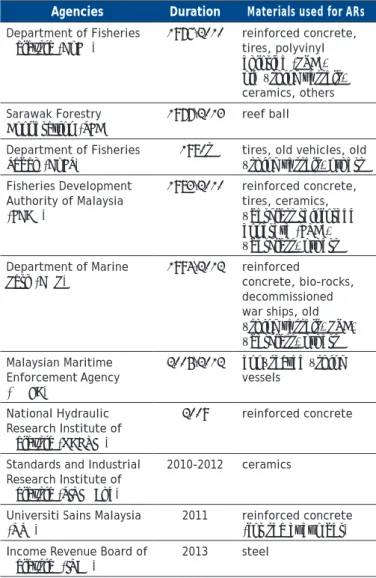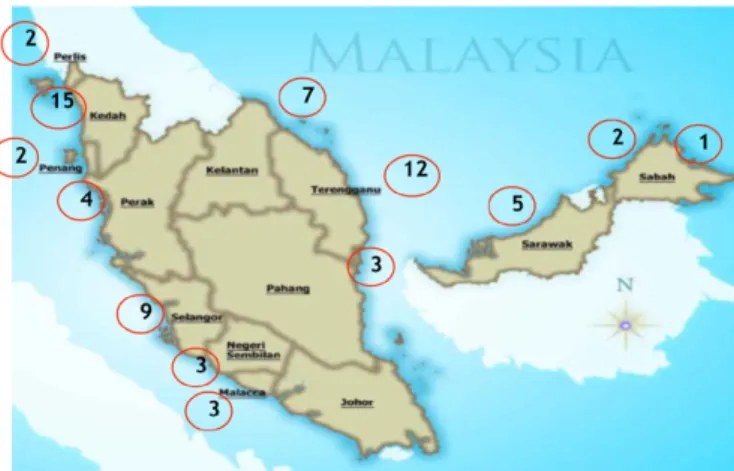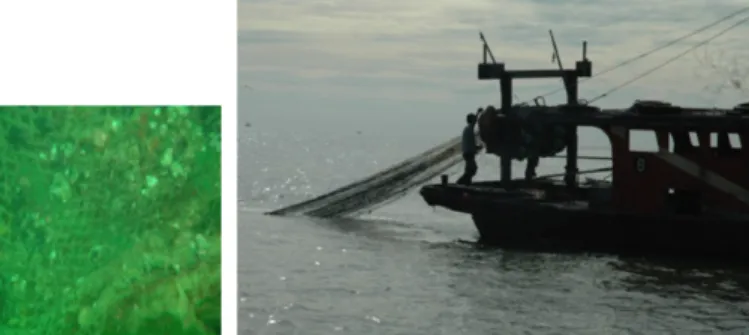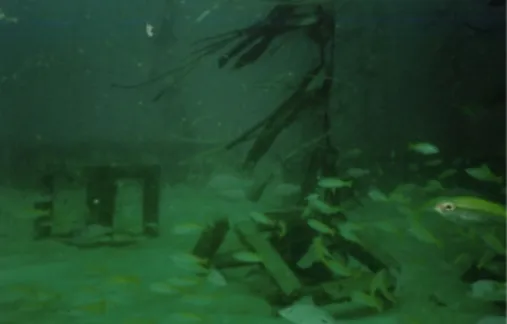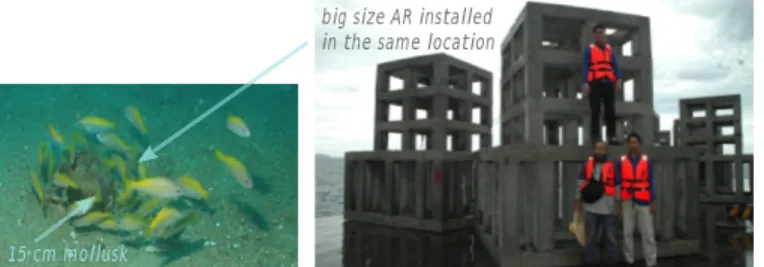A comparison of the efficiency of fishing gear on the trawl with knotted and knotless net bands. During the mini-symposium on LIFE Fishing, the scope of presentations was wide and varied, i.e.
About the Authors
Conclusion and Way Forward
SEAFDEC envisages that the establishment of regional fishing vessel records together with the refined fishing license systems can be effectively used as fisheries management tools in combating IUU fishing in the South East Asian region. Based on a paper presented by SEAFDEC during the Regional Workshop on Public Information Campaign organized by the ASEAN on 28 June 2013 in Manila, Philippines, this article focuses on the progress of the establishment of the RFVR starting with vessels that are 24 m in length and more measure , as one of the IUU fishing-related countermeasures, and date the previous information contained in Matsumoto et al.
Regional Fishing Vessels Record
Through this project, SEAFDEC has provided assistance to the countries of the region in their efforts to improve their respective fishing licensing systems to comply with regional and international requirements and to combat IUU fishing in their respective waters. SEAFDEC envisages that the establishment of regional fishing vessel records together with the refined fishing licensing systems can be effectively used as fisheries management tools to combat IUU fishing in the area.
Occurrence of IUU Fishing in the Southeast Asian Region
The project on promoting sustainable fisheries and countermeasures related to illegal, unreported and unregulated fishing in Southeast Asia, implemented by SEAFDEC with financial support from the Japan Trust Fund (JTF), includes the promotion of fishing permits, boat registration and port state measures in Southeast Asia to would pave the way for the development of a regional record of fishing vessels, starting with vessels measuring 24 meters in length and above in the first phase, and later expanding to record vessels measuring less than 24 meters. For example, in 2008-2012, the majority of illegal fishing boats are said to have come from Vietnam, Thailand and Malaysia, while a large vessel from China was apprehended for illegal fishing in the Natuna Sea, which extends to the Karimata Strait and the Java Sea. .
Impacts of IUU Fishing
Regional Approach to Prevent IUU Fishing/Illegal Fishing
Brunei Darussalam, Indonesia, Malaysia, Myanmar, Philippines, Singapore, Thailand and Vietnam to explore the possibility of data sharing and define agreed basic information requirements for the collection of information relevant to the RFVR. Based on the responses, the countries concerned have agreed on basic vessel registration requirements and basic information that can be shared between countries, as shown in Box 1 and Box 2 respectively.
Way Forward
Gross Tonnage (G.T.)(International Gross . Tonnage/ Registered Gross Tonnage) BN, ID, MY PH, TH, VN, SG MM MY (use GRT). Serial number of engine BN, ID, MY PH, VN, SG MM TH (data compiled by Marine Department) Area (country) of fishing operation BN, ID, MY TH, VN, SG MM, PH. In order to finalize the establishment of RFVR, SEAFDEC proposed to organize a regional workshop on RFVR database development and management in 2014, to improve information sharing and integration of information on the basic requirements for the RFVR with the relevant Member States .
Chumnarn Pongsri is the Secretary-General of the Southeast Asian Fisheries Development Center (SEAFDEC) and concurrently Head of SEAFDEC Training Division (TD), based at the SEAFDEC Secretariat in Bangkok, Thailand. In developing its artificial reefs (ARs) program for fishery use (resource conservation and fishing) and non-fishery use (marine resource enhancement), Malaysia allocated approximately 155 million Malaysian Ringgit (RM) from 1976 to 2010. Malaysia was involved in the construction, deployment and management of the ARs, also known as tukun tiruan in Bahasa Melayu.
Big Artificial Reefs for Improved Enhancement of Fishery Resources: Experience of Malaysia
About 36% of the allocated budget was channeled through the Department of Fisheries Malaysia (DoFM), while more than 63% was allocated through the Fisheries Development Authority of Malaysia (FDAM) and less than 1% through other agencies. The first part of the country's ARs program promoted the use of small and medium tukun tiruan, while in the last part and for different reasons, FDAM and DoFM focused on large tukun tiruan.
Big versus Small-Medium Size ARs
However, due to harsh weather conditions and illegal trawler fishing, most of these small and medium-sized ARs were abandoned. Whereas before, when small-medium size ARs were used, the structures could not last long, while aggregation of fish was observed to be less (Fig. 8) compared to the situation with large size ARs. Nevertheless, one of the most critical advantages of deploying large ARs is the deterrence of intruding trawlers from coming close to coastal areas, as their trawl nets and especially the catch bags can become entangled in the ARs (Fig. 9), leading to heavy losses in their fisheries (Ali et al., 2011).
Deployment and Monitoring of Big Size ARs
Later, PVC materials were used to construct ARs, but this too proved unsuitable, especially in open water, where many PVC ARs were lost or destroyed. At the beginning, researchers from DoFM observed that schools of big-eyed snapper (more than 30 tails) were swimming close to a 15 cm mollusc (Fig. 6), hence the idea of installing a large AR in the same location. , and as a result, about 2,000 tails of Lutjanus spp. Soon after deployment is completed at each location, divers are sent out to inspect and record the condition and position of the modules on the seabed.
Success Story: Malaysian Big Size ARs
To facilitate discussions and information sharing on new AR technology, DoFM plans to organize the second workshop on Artificial Reefs for the Enhancement of Fisheries Resources in the Southeast Asia Region in 2015 with the collaboration of SEAFDEC and the Fisheries Research Agency (FRA) ) of Japan. Technologies developed through Malaysia's ARs Program can be disseminated to other countries in the Southeast Asian region. Protecting coastal habitats and enhancing fishery resources using large-scale artificial reefs on the east coast of Peninsular Malaysia.
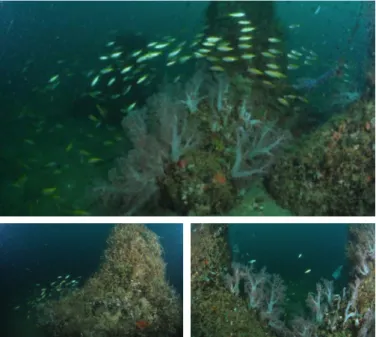
Current Milkfish and Tilapia Industry Statistics in the Philippines
"Fruits" of genetic research on tilapia in the Philippines (Modified from Abella, 2006; Acosta, 2009) Strain Developed. More than 90% of the total tilapia production in the Philippines comes from freshwater environments, of which 40% is produced from freshwater ponds. Utilization of Tilapia in the Philippines: Value Added Of the total tilapia supply, only a small portion is processed into value-added products due to household consumers.
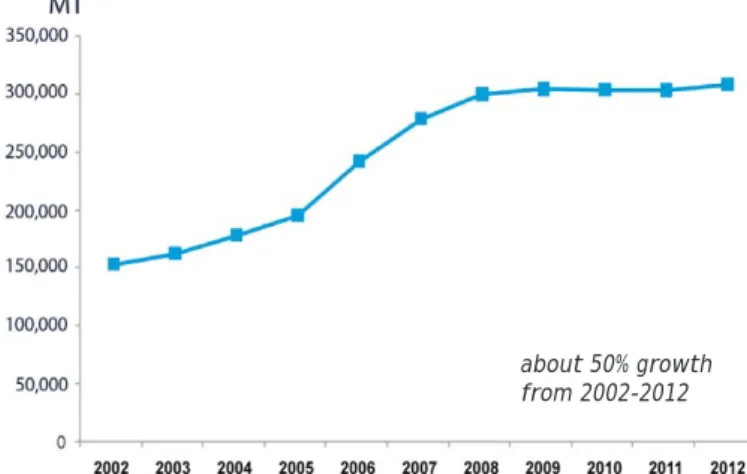
Biofactory Opportunities and Challenges for Tilapia and Milkfish
One of the good news about the technology used to produce biofuels from fish waste is that it is transferable (Lane, 2008), adding another reason to develop tilapia and milkfish as biofactories. The most notable advance in this field is the production of humanized insulin from islet cells (Brockmann bodies) of transgenic tilapia (Pohadjak et al., 2004). Fish eggs from transgenic fish have also been used to produce heterologous recombinant.
Light Trap Fishing Trials
The use of LED lights is one of the latest developments in light fishing, which is being promoted in fisheries instead of the use of incandescent, halogen and metal halide lamps. In a laboratory experiment without refuges, positive group responses of crayfish were more pronounced at lower light intensities and green, blue and yellow colors and significantly different from the control. Of a total of 37 trials (148 trap draws), 15 used bulb traps and 22 with LED light traps.
Results of Light Trap Fishing Trials
Animal movement during each trial in the pond was directly observed by visual inspection. The left columns with the gray area show the strong response of the animal to the lamps, and the right columns show the weak response. The animal's movements during each trial were recorded with a digital video camera, while the animals' behavior in ambient light (control) was observed by eye.
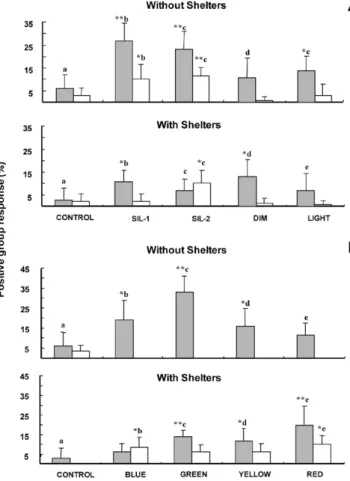
Discussion
Before each trial, the animals were confined to one end of the tank using a black PVC partition, providing them with sufficient space to crawl freely. At the beginning of each trial, ambient light was applied for 10 min (control), the partition was removed, and the animals were allowed to move freely. In the pond, typical exploratory behavior involves free movement of animals when they respond discriminatively to light intensity or color.
Conclusion
However, the addition of shelters was not consistent with such a hypothesis because the animals did not stop their exploratory behavior in either the light or the dark. In this regard, exploratory behavior could still be considered as a form of complex and dynamic behavior as opposed to simpler responses, positive or negative to a light source, due to the instability of the environment and the rapid interactions between the animal and the world around it. Therefore, other behaviors such as looking around while remaining in one location or resting against any object cannot be considered exploratory.
Acknowledgment
A similar light trapping method has been successfully applied to other traditional fishing gear (e.g. “tempirai” or bamboo trap) for collecting shellfish and fish from the Barito River in Indonesia (Ahmadi and Rizani, 2012). are adapted in the Southeast Asian region.
About the Author
According to DA-BFAR, the waters approaching the Manila Bay area are rich in deep-sea shrimp, and traps were found to be the most suitable fishing gear to harvest this resource. However, management measures need to be developed to prevent the resource from being depleted in the long term.
Assessing the Marine Biodiversity of Manila Bay
Assessment Survey
Fishing Gear Used
Results and Discussion
9, and the wealth of samples obtained from various beam trawl stations in Fig. The majority of samples from beam trawl stations were crustaceans, while those from beam trawl stations include other invertebrates (Figure 12). The BI of the total catch with traps and beam trawls is shown in the figure.

Potential Fishing Grounds for Deep-sea Shrimps
Taxa saltem 18 trabibus captura dominata, excepta Anthozoa, Aristeidae, Asteroidea, Echinoidea, Holothuroidea, Ophiuroidea, Polychaeta, Conidae, Fasciolariidae, Galatheidae, Gastrochaenidae, Macrouridaidaidaidaellae, Trochidae et Turridae.
Conclusion and Recommendations
Viron are Philippine Bureau of Fisheries and Aquatic Resources (BFAR) researchers assigned aboard the M.V. FAO Guide to Species Identification for Fisheries Purposes, Living Marine Resources of the Western Central Pacific. Biodiversity Target: 4th National Report of the Convention on Biological Diversity Republic of the Philippines.

CALENDAR OF EVENTS
SEAFDEC is an autonomous intergovernmental body established as a regional treaty organization in 1967 to promote the sustainable development of fisheries in Southeast Asia. To develop and manage the fisheries potential of the region by rationally utilizing resources to ensure food security and human security and poverty alleviation through the transfer of new technologies, research activities and information dissemination. To increase the ability of the fisheries sector to address new international issues and for greater access to international trade.
